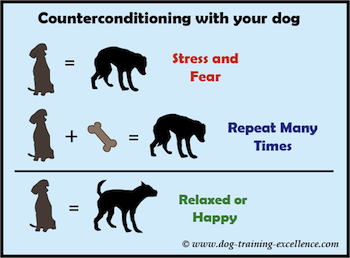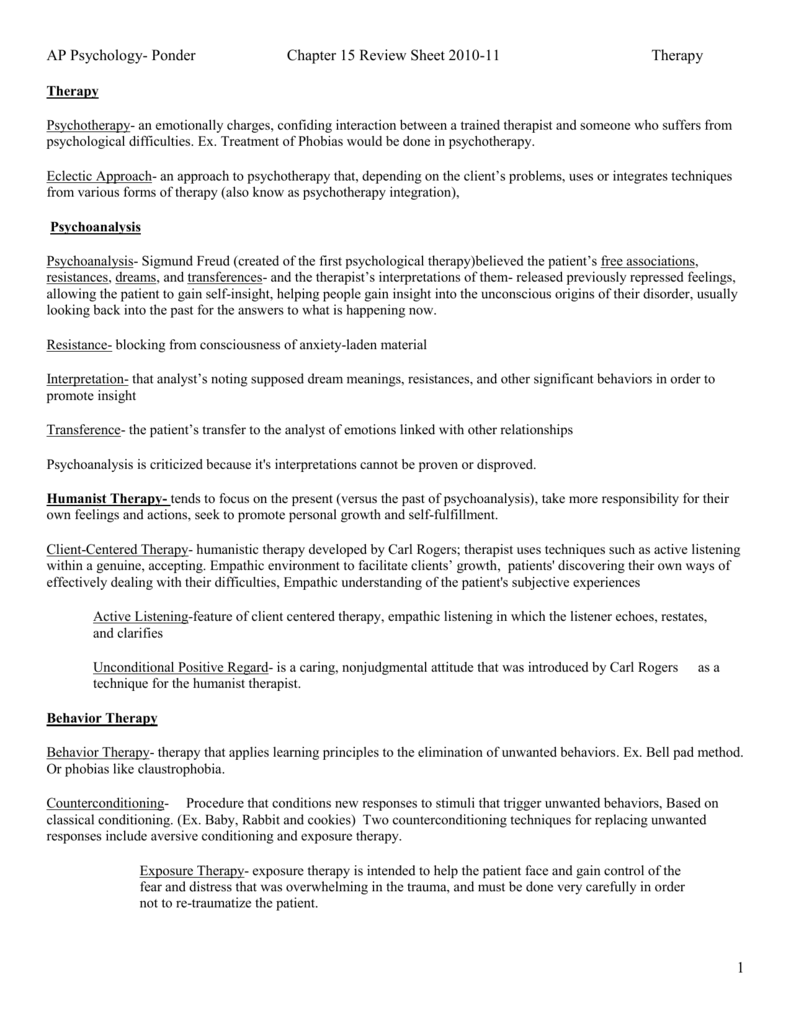Counterconditioning can happen through systematic desensitization aversion therapy response substitution fear conditioning and aversive counterconditioning. Bennys mother tries to reduce his fear of sailing by giving the 3-year-old his favorite candy as soon as they board the boat.
B interpersonal psychotherapy and.

. A procedure that trains people to make new responses to stimuli that currently trigger unwanted responses is called. Examples of Counter Conditioning. Two counterconditioning techniques for replacing unwanted responses are Aversive conditioning and exposure therapy Sluggishness tremors and twiches similar to those of Parkinsons disease are most likely to be associated with excessive use of certain --- drugs.
Two counterconditioning techniques for replacing unwanted responses include. Building an emotional association is classical conditioning. Two counterconditioning techniques for replacing unwanted responses are aversive conditioning and exposure therapy.
It is applied with some frequency to treat irrational fears in both human beings and animals as well as addictions. 4 aversive conditioning and exposure therapy. Two counterconditioning techniques for replacing unwanted responses are A.
B interpersonal psychotherapy and stress inoculation training. The treatment of serious psychological disorders with prescribed medications or medical procedures that directly influence the nervous system is called. 2 spontaneous recovery and stress inoculation training.
3 unconditional positive regard and transference. Two counterconditioning techniques for replacing unwanted responses are aversive conditioning and exposure therapy. Two counterconditioning techniques for replacing unwanted responses are A systematic desensitization and free association.
Unconditional positive regard and transference. Aversive conditioning and exposure therapy. Two counterconditioning techniques for replacing unwanted responses include.
Systematic desensitization and free association. Two counterconditioning techniques for replacing unwanted responses include aversive conditioning and exposure therapy. If you can make the animal feel comfortable or good when they interact with the stimulus then they will be less and less likely to elicit the unwanted response.
Unconditional positive regard and transference D. Obviously behavior affects emotion and emotion affects. C unconditional positive regard and transference.
C unconditional positive regard and transference. Two counterconditioning techniques for replacing unwanted responses are. Two counterconditioning techniques for replacing unwanted responses are a systematic desentization and free association b spontaneous recovery and stress inoculation training c unconditional positive regard and transference d aversive conditioning and exposure therapy.
Two counterconditioning techniques for replacing unwanted responses are A systematic desensitization and free association. D aversive conditioning and exposure therapy. Spontaneous recovery and stress inoculation training.
A systematic desensitization and free association. Through counter conditioning you change the way the animal feels about the stimulus. Building an behavior is operant conditioning.
Building a new emotional association to replace an unwanted emotional association is classical counterconditioning. Token economy and meta-analysis. 1 systematic desensitization and free association.
Counterconditioning is a psychological technique developed from a behavioral orientation that consists of remove an unwanted response and replace it with another more appropriate by using pleasant stimuli. Aversive conditioning and exposure therapy. Two counterconditioning techniques for replacing unwanted responses are A systematic desensitization and free association.
Unconditional positive regard and transference. Instead the response will be replaced by something more pleasant. Aversive conditioning and exposure therapy.
C unconditional positive regard and transference. B spontaneous recovery and stress inoculation training. B interpersonal psychotherapy and stress inoculation training.
D aversive conditioning and exposure therapy. Most people are likely to be surprised by the results of Milgrams initial obedience experiments because. Spontaneous recovery and stress inocculation training C.
Systematic desensitization and free association. Systematic desensitation and free association B. Aversive conditioning and exposure therapy.
C 48Two counterconditioning techniques for replacing unwanted responses are A systematic desensitization and free association. Spontaneous recovery and stress inoculation training. C unconditional positive regard and transference.
Two counterconditioning techniques for replacing unwanted responses include a. Building a new behavior to replace an unwanted behavior is operant counterconditioning. Token economy and meta-analysis.
B interpersonal psychotherapy and stress inoculation training. Two counterconditioning techniques for replacing unwanted responses include a.

What Is Counterconditioning And How To Use It

57 Two Counterconditioning Techniques For Replacing Unwanted Responses Include A Course Hero

Two Counterconditioning Techniques For Replacing Unwanted Responses Are A Course Hero

Desensitization And Counterconditioning Aztec Animal Clinic

Play And Behavior Therapy Introduction To Psychology

Two Counterconditioning Techniques For Replacing Unwanted Responses Are A Course Hero

0 comments
Post a Comment